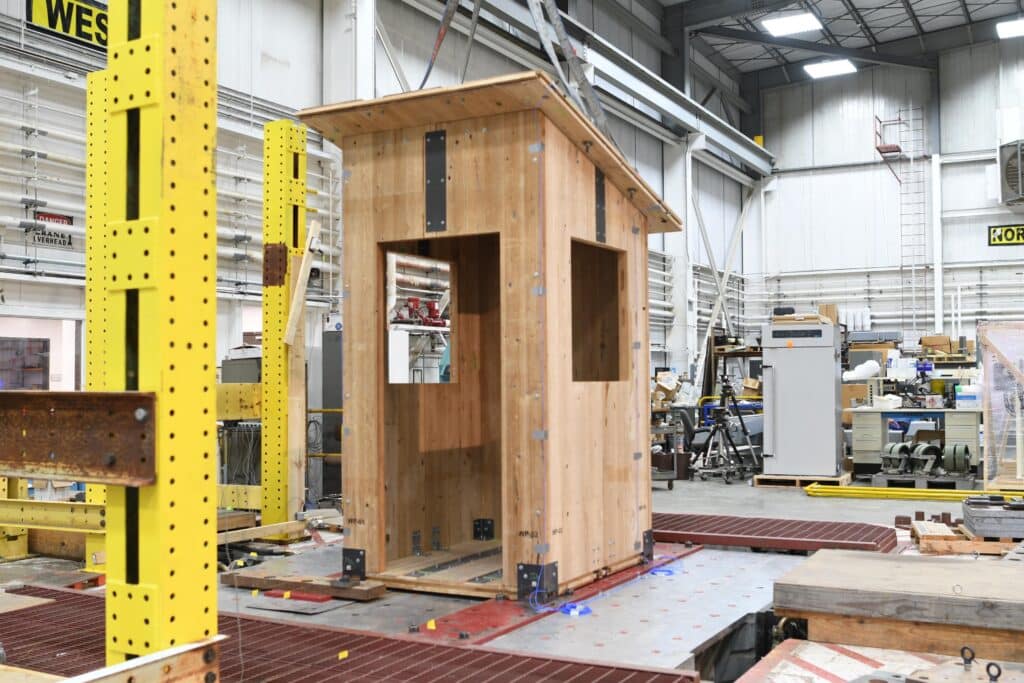US researchers are using biomass to develop thermally modified cross-laminated timbers, known as “advanced cross-laminated timbers,” and are pushing to use the timbers in low-rise projects across the country.
It comes as Wood Central reported earlier this month that the US Army is working with material scientists on new cross-laminated timber technology to scale up mass timber usage in civilian housing projects and counter-terrorism and force protection projects.
Working with Washington State University, the US Department of Defense’s Army Corps of Engineers is one of several government agencies investing in research that uses recycled carbon fibre to create new mass timber products.
Already, WSU is working with the Departments of Housing and Urban Development to use new and novel mass timber construction products to drive greener and more cost-effective affordable housing projects at scale.

Led by Pouria Bahman, Assistant Professor, Karl Englund, Research Professor, and Hui Li, Assistant Professor, from WSU’s Composite Materials and Engineering Centre, the university is working with the Composite Recycling Technology Centre (CRTC) on new deployments at the Army Corps Port Angeles and Construction Engineering Research Laboratory.
As part of the project, the researchers will analyse the structure and materials and evaluate the possibility of mass-producing these panels — a one-of-a-kind initiative in the Pacific Northwest.
“One primary objective of this project is to develop methods for connecting the panels, facilitating the construction of modular and deployable structures,” Assistant Professor Bahmani said before adding that “we utilise steel connections and will conduct thorough testing to ensure the safety and durability of these structures.”
The CRTC has been developing advanced CLT timber that uses thermally modified western hemlock in its formulation. Thermal modification makes the wood more resistant to decay and increases its durability.
The researchers have been working to strengthen the thermally modified wood by adding repurposed carbon fibre composites to the CLT panels, which are used in many products, “from aircraft parts to wind turbine blades to fishing rods,” according to WSU media.
“We are currently focused on exploring the thermal modification process for western hemlock species to create modular, durable, and deployable structures constructed from thermally-treated CLT panels,” Assistant Professor Bahmani said.
If successful, the US Army will scale up the production of mass timber solutions from highly accessible (and economical) Western Hemlock, a tree species common in the Pacific Northwest, working with indigenous tribes to harvest, process and supply the timber.
“Mass timber has a lot of momentum in the Army right now,” according to Dr Pete Stynoski, a research civil engineer at the US Army Corps of Engineers R&D Centre (ERDC), before adding that the project is trying to “widen sourcing Class IV materials for more resilient structures in everyday use and contested logistics scenarios.”
In November, Wood Central reported that the US Army Corps of Engineers has now mandated a policy that requires a “mass timber structural option be considered at the design phase in all of its vertical construction projects going forward.”
The US Congress, last year approved more than US $16.674 billion in military infrastructure spending – split between military construction ($14.73b) and family housing ($1.94b), with more than the US $1.47B in spending allocated for the US Army Corps of Engineers.
- To find out more about heavily modified cross-laminated timber and its role in the next generation of timber products, read Washington State University’s research.







